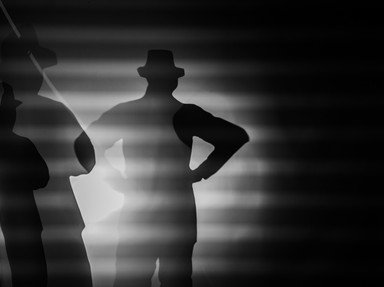Quiz Answer Key and Fun Facts
1. Ruler of Tenochtitlan at the time of first contact with Europeans
2. British explorer of North America's Pacific coast
3. British naval commander killed during the Battle of Trafalgar
4. Venezuelan leader of the struggle for independence from Spain of multiple South American countries
5. Suquamish and Duwamish chief, purported author of a powerful plea for environmental respect
6. English naturalist known for developing a theory of evolution by means of natural selection
7. Prussian statesman, first Chancellor of the German Empire
8. Saudi Arabian king who was the first member of the Saudi royal family to visit England
9. Leader of a Southeast Asian nation who was at various times King, Prime Minister and President
10. First human to travel in space 1934-1968
Source: Author
looney_tunes
This quiz was reviewed by FunTrivia editor
bloomsby before going online.
Any errors found in FunTrivia content are routinely corrected through our feedback system.

